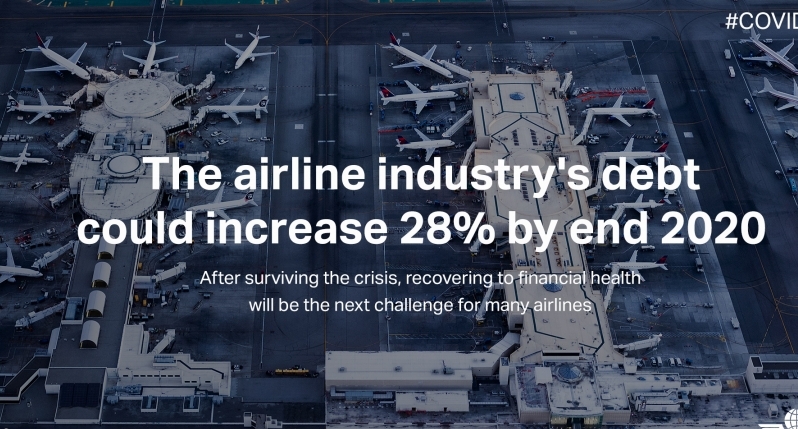Airline debt to increase by 28%: IATA
The International Air Transport Association (IATA) released analysis showing that the airline industry’s global debt could rise to $550 billion by year end - a massive 28 percent rise.

May 27, 2020: The International Air Transport Association (IATA) released analysis showing that the airline industry’s global debt could rise to $550 billion by year end - a massive 28 percent rise. That is a $120 billion increase over debt levels at the start of 2020.
$67 billion of the new debt is composed of government loans ($50 billion), deferred taxes ($5 billion) and loan guarantees ($12 billion).
$52 billion is from commercial sources including commercial loans ($23 billion), capital market debt ($18 billion), debt from new operating leases ($5 billion), and accessing existing credit facilities ($6 billion).
“Government aid is helping to keep the industry afloat. The next challenge will be preventing airlines from sinking under the burden of debt that the aid is creating,” said Alexandre de Juniac, IATA’s director general and CEO.
In total governments have committed to $123 billion in financial aid to airlines. Of this, $67 billion will need to be repaid. The balance largely consists of wage subsidies ($34.8 billion), equity financing ($11.5 billion), and tax relief / subsidies ($9.7 billion). This is vital for airlines which will burn through an estimated $60 billion of cash in the second quarter of 2020 alone.
“Over half the relief provided by governments creates new liabilities. Less than 10% will add to airline equity. It changes the financial picture of the industry completely. Paying off the debt owed governments and private lenders will mean that the crisis will last a lot longer than the time it takes for passenger demand to recover,” said de Juniac.
The $123 billion in government financial aid is equal to 14 percent of 2019’s total airline revenues ($838 billion). The regional variations of the aid dispersion indicate that there are gaps that will need to be filled.
There are still large gaps in the financial aid needed to help airlines survive the Covid-19 crisis. The US government has led the way with its CARES Act being the main component of financial aid to North American carriers which in total represented a quarter of 2019 annual revenues for the region’s airlines. This is followed by Europe with assistance at 15 percent of 2019 annual revenues and Asia-Pacific at 10 percent. But in Africa, the Middle East and Latin America average aid is around 1 percent of 2019 revenues.
“Many governments have stepped up with financial aid packages that provide a bridge over this most difficult situation, including cash to avoid bankruptcies. Where governments have not responded fast enough or with limited funds, we have seen bankruptcies. Examples include Australia, Italy, Thailand, Turkey, and the UK. Connectivity will be important to the recovery. Meaningful financial aid to airlines now makes economic sense. It will ensure that they are ready to provide job-supporting connectivity as economies re-open,” said de Juniac.
Last week, the IATA board of governors committed to five key principles for the industry restart. Among these are commitments to the safety and security of staff and travelers, to meeting the industry’s environmental targets and to being a meaningful driver of the economic recovery with affordable connectivity.


